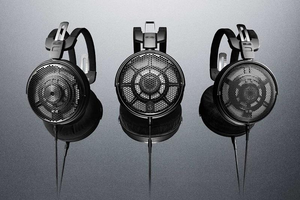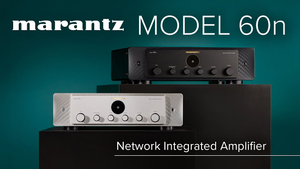
The Air Up There: An In-Depth Review of the Audio-Technica ATH-ADX5000
Introduction: The Featherweight Contender from Tokyo
In the rarified air of flagship headphones, where price tags soar and expectations are monumental, a certain orthodoxy has taken hold. Value is often equated with heft, with exotic woods, dense metals, and a feeling of substantial, tank-like construction. Brands have conditioned the market to believe that a top-tier headphone should feel like a luxury object, a piece of industrial art that announces its worth the moment you pick it up. And then, there is the Audio-Technica ATH-ADX5000.

Hailing from a storied Japanese manufacturer with deep roots in both professional recording studios and esoteric audiophile circles, the ADX5000 is not just another contender for the summit-fi throne; it is a bold, almost defiant statement against the prevailing philosophy. It eschews the weight-as-luxury paradigm, instead embarking on an obsessive, single-minded pursuit of two interconnected goals: absolute lightness and uncompromising sonic transparency. This is a headphone engineered not to be felt, but to disappear, leaving only the music in its purest form.
This review seeks to answer the central questions posed by this unique design philosophy. Does this "less is more" approach truly succeed in delivering a world-class listening experience, or does it come with too many compromises? Is the ADX5000 a hyper-specialized tool, a scalpel designed for a niche audience of audio purists, or is it a genuine, all-around challenger to the established trinity of dynamic driver flagships? To find out, we will embark on a deep dive into every facet of this remarkable headphone, from its unique unboxing experience and polarizing build to a granular analysis of its celebrated and controversial sound, culminating in a head-to-head showdown with its most formidable rivals.

The ADX5000 represents a fundamental divergence in the flagship market. While its competitors focus on creating a tangible sense of value through mass and materials, Audio-Technica has gambled that the ultimate luxury is not feeling a heavy, expensive object on your head, but rather, not feeling the object at all. The entire product experience is shaped by this singular focus on functional, ergonomic performance. It is a design that targets a different kind of consumer: the pragmatist who values the experience of a multi-hour, weightless listening session over the tactile sensation of burnished leather and polished steel. This is the core of the ADX5000's identity, and it is a distinction that must be understood to appreciate its unique place in the audiophile world.
Unboxing and Presentation: The Retro Suitcase
The experience of acquiring a flagship product should feel special, and Audio-Technica, a company often known for its no-frills packaging, has clearly taken this to heart with the ADX5000. The unboxing process is a premium affair, a carefully orchestrated sequence that adds a real sense of "drama" to the initial reveal. After navigating a series of nested cardboard boxes, the owner is presented not with a simple case, but with a distinctive, retro-styled mini-suitcase that immediately sets the ADX5000 apart.

The Case and Accessories
This luggage-style case, reminiscent of those used for 8mm film projectors from a bygone era, is both stylish and highly functional. Lined with a soft, satin-like, plush material, it provides a luxurious and secure home for the headphones. While its size may make it a bit cumbersome for carry-on luggage, it is far more practical for storage and ground transport than the handsome but often useless presentation boxes that accompany many other high-end headphones.

Inside, the accessory package is spartan. The primary inclusion is a single, high-quality 3-meter (9.8-foot) cable terminated with a standard 6.3 mm ($1/4"$) plug. The cable itself is well-regarded; it is sturdy yet lightweight, with a cloth-coated finish that resists kinks and minimizes microphonics—a notable improvement over the often unwieldy cables supplied with some competitors, such as the Sennheiser HD800S.
However, two critical points detract from the otherwise premium experience. First is the use of Audio-Technica's proprietary A2DC (Audio Designed Detachable Coaxial) connectors at the earcups. While these connectors are secure, their proprietary nature severely limits the vast world of aftermarket cables, a significant drawback for the many audiophiles who enjoy "cable-rolling" to fine-tune their system's sound. Second, and more surprising for a flagship headphone at this price, is the complete absence of a stock balanced cable. In an era where 4.4 mm or 4-pin XLR balanced connections are becoming standard, having to purchase a balanced cable separately for a considerable $349 is a significant omission that feels out of step with the market.

Design and Build Quality: A Study in Contrasts
The design of the ATH-ADX5000 is a masterclass in minimalism. It is a purely functional, almost skeletal aesthetic that strips away every non-essential element in service of its primary goals: performance and weight reduction. There is no rich mahogany or polished carbon fiber here; instead, the design language is one of purposeful engineering. The most striking visual feature is the large, honeycomb-punched metal grilles that dominate the earcups, offering an alluring glimpse of the advanced driver and baffle assembly within while allowing for maximum airflow. This is the epitome of a "form-follows-function" philosophy.
Materials Science and the Weight Paradox
The materials chosen are a testament to this philosophy. The frame is constructed from a rigid yet incredibly lightweight magnesium alloy, a key component in achieving its scant weight. The contact points—the earpads and headband—are lined with Alcantara, a luxurious and highly durable synthetic material with properties similar to suede, chosen for its combination of comfort and longevity.
This meticulous engineering results in an astonishingly low weight of just 270 grams. This is an engineering marvel that makes the ADX5000 significantly lighter than key competitors like the Sennheiser HD800S (330g) and the Focal Clear MG (450g). However, this achievement is also the source of the headphone's most polarizing characteristic: its tactile feel. The extreme lightness, while a triumph of engineering, creates a cognitive dissonance for many users. Multiple reviewers have noted that despite the premium materials and hand-assembly in Tokyo, the ADX5000 simply does not feel like a $2,000 product. Some have gone so far as to say it feels more like a headphone in the $150 to $200 range.

This paradox does not stem from poor build quality, but rather from a fundamental misalignment with market expectations. The high-end audio market has been largely conditioned by brands like Focal and Audeze to associate value with density and mass. A flagship headphone is expected to have a certain reassuring heft. The ADX5000, with its skeletal magnesium frame, deliberately rejects this notion. It is a "Formula 1 car" in a market segment where many consumers are looking for a "Bentley". Audio-Technica has engineered a product for ultimate performance, but in doing so, has created a marketing and positioning challenge, as the physical sensation of the product can feel at odds with its price tag.
The Creaking Controversy
Exacerbating this perception issue is a widely reported quality control flaw, particularly in earlier production units. Numerous users have documented loud creaking and squeaking sounds emanating from the gimbals and yoke assembly whenever they move their jaw or turn their neck. For a headphone designed for immersive listening, this is an unacceptable flaw. Such a noise completely shatters the listening experience, instantly reminding the user of the physical object on their head—the very thing the lightweight design is meant to prevent. While reports suggest that Audio-Technica has listened to feedback and addressed this issue in later runs, it remains a significant concern for anyone considering an early unit or purchasing on the second-hand market, and it unfortunately undermines the argument for high-quality, precision Japanese engineering.
Comfort and Ergonomics: The Disappearing Act
If the build quality is a point of contention, the comfort of the ATH-ADX5000 is its undisputed crown jewel. Across the board, it is lauded as one of the most, if not the most, comfortable flagship headphones on the market. The benchmark for a truly comfortable headphone is its ability to "disappear" on the head, and the ADX5000 achieves this disappearing act with unparalleled success.
The recipe for this extraordinary comfort is a combination of several deliberate design choices. The primary factor is, of course, its featherweight 270g construction. This lack of mass means there is very little downward force on the head and neck, making it ideal for all-day listening sessions. This is complemented by a moderate, well-judged clamping force that strikes a perfect balance between security and pressure relief. Unlike the sometimes-wobbly fit of the HD800S, the ADX5000 feels secure on the head without creating hotspots or uncomfortable pressure points. Some users note the clamp feels a bit tight initially, but it quickly settles into a comfortable and stable fit.
The final ingredient is the earpads. The large, circular pads are made from plush Alcantara and are generously sized, providing ample room for most ears to sit comfortably inside without touching the driver or the sides of the pad. It is worth noting that one reviewer experienced a very mild skin irritation from the Alcantara material, a rare but possible subjective reaction for those with sensitive skin.
Significantly, the ADX5000 marks a departure from Audio-Technica's signature "3D Wing Support" system found on many of its previous open-back models. While the wing system was innovative and offered a very light clamp, its two small contact points could be a point of irritation for some users and was often described as divisive. By moving to a more conventional, albeit minimalist, headband design, Audio-Technica has created a fit that is far more universal, secure, and consistently comfortable for a wider range of head shapes and sizes.

Sound Analysis: Air, Speed, and Scrutiny
The sonic character of the ATH-ADX5000 is as distinctive and purposeful as its physical design. Its overall tonality can be best described as neutral-bright, highly transparent, and unapologetically analytical. This is a sound signature that prioritizes ultimate clarity, blistering speed, and microscopic detail retrieval above all else. It is not a warm, lush, or forgiving headphone; it is a precision instrument designed to dissect a recording and present it with unflinching honesty. Many have characterized its sound as being akin to a "smoother HD800S, just with more air up top".
Bass
The low-end performance of the ADX5000 is a perfect example of its quality-over-quantity approach. The bass is exceptionally fast, tight, and articulate, with a remarkable ability to render texture and detail. It excels at revealing the character of a bass guitar or the decay of a drum hit rather than delivering brute force. There is a slight but tasteful bump in the mid-bass region, which injects a touch of musicality and prevents the presentation from sounding overly thin. However, this is paired with a noticeable roll-off in the sub-bass frequencies. Consequently, the ADX5000 lacks the visceral slam, deep rumble, and physical punch that define competitors like the Focal Clear. It will not satisfy listeners looking for powerful, head-rattling bass; it is simply not designed for that purpose.
Midrange
The midrange is a standout strength and, for many, the heart of the ADX5000's appeal. It is praised for its incredibly life-like, uncolored, and honest presentation. The clarity is exceptional, allowing vocals, pianos, and string instruments to come through with pristine definition and separation. This makes it an ideal choice for complex acoustic, classical, and live recordings, where its ability to untangle dense passages is nothing short of remarkable. However, this extreme clarity comes with a trade-off. The upper-midrange is quite forward, and on certain recordings—particularly those with powerful female vocals or aggressive mastering—it can cross the line into "shouty" or sibilant territory. This is a key part of its unforgiving nature; it will reward well-recorded music but mercilessly expose flaws in production.
Treble
The treble is arguably the most defining, and most discussed, aspect of the ADX5000's sound. It is unapologetically bright, extended, and loaded with sparkle and air. This tuning is the engine of its incredible detail retrieval, allowing it to unearth an immense amount of high-frequency information and micro-details that are simply lost on warmer headphones. The critical question with any bright headphone is whether it becomes fatiguing. Here, the ADX5000 performs a delicate balancing act. Many reviewers find that while it is intensely bright, it skillfully manages to avoid the harsh, piercing, or fatiguing peaks that can plague other bright headphones (such as certain Beyerdynamic models or even the HD800S at times). It presents its brilliance in a more refined, dispersed manner, giving instruments like cymbals and trumpets room to breathe without becoming painful. Nevertheless, its revealing nature means it remains extremely unforgiving of poor recordings, which can quickly sound thin or harsh.
The Measurement Controversy: A Dissenting View
No discussion of the ADX5000's sound would be complete without addressing the chasm that exists between subjective listening impressions and objective, measurement-based analysis. A highly critical review from AudioScienceReview, based on precise measurements, paints a starkly different picture of the headphone's performance.
The key findings from this objective analysis are threefold. First, the frequency response shows a large deviation from established target curves, with an "exaggerated upper bass combined with the same in treble region" and a significant recess in the middle frequencies. This tuning was described as a "showroom sound" designed for quick impressions rather than accuracy. Second, the measurements revealed a significant spike in distortion around 2.2 kHz, a flaw so pronounced that it was flagged as a "clear design flaw" in the driver. Third, its combination of high impedance (420 ohms) and low sensitivity makes it a very difficult headphone to drive properly, especially from portable devices.
These objective "flaws" provide a fascinating lens through which to understand the subjective experience. The measured "exaggerated" bass and treble are precisely what listeners perceive as the analytical, detailed, and bright signature. The distortion peak at 2.2 kHz could very well be the objective cause of the "shoutiness" in the upper-mids that some listeners report. This makes the ADX5000 an audiophile Rorschach test. Its measured deviations from a neutral target are not necessarily failures of engineering; for a certain type of listener, they are the very features that create the hyper-detailed, airy, and analytical sound they seek. The headphone's polarizing nature is a direct result of this tuning philosophy, which will be adored by some and rejected by others. An expert assessment cannot simply declare one side right; it must explain why the headphone is so divisive, and the measurements provide the recipe for its unique and controversial flavor.

Technical Performance: A Wide, Fast Stage
Beyond its core tonality, the ATH-ADX5000's technical performance is a key part of its flagship credentials. It excels in creating a sense of space and resolving fine detail, leveraging its advanced driver technology to impressive effect.
Soundstage and Imaging
The ADX5000 possesses a genuinely wide and spacious soundstage, which is consistently cited as one of its greatest strengths. It provides excellent lateral definition, allowing for clear separation and placement of individual instruments across a broad horizontal plane. While its width is impressive, the consensus is that it does not quite match the sheer, class-leading expansiveness and holographic depth of the Sennheiser HD800S, which remains the benchmark for soundstage in a dynamic headphone. The ADX5000's presentation can feel slightly more intimate or two-dimensional in direct comparison, with less of the out-of-head depth that the HD800S can produce.
Where the ADX5000 truly shines is in its imaging and separation. Its ability to place instruments and vocals with pinpoint precision within the stage is exceptional. Layering is another key strength; the headphone can dissect even the most complex and busy musical passages with surgical precision, allowing the listener to focus on individual musical lines as if using a "microscope for music".
Speed and Dynamics
The 58 mm tungsten-coated driver is exceptionally fast. It renders transients with a sharp, clean leading edge, giving notes a highly articulate and defined character. Some analyses suggest its transient response in the midrange and treble may even be slightly faster than that of the HD800S, contributing significantly to its perception as a hyper-detailed headphone.
However, when it comes to macrodynamics—the sense of impact, punch, and slam—the ADX5000 is more polite. While its dynamic punch is a step up from the famously lean HD800S, it falls well short of the authority and visceral impact delivered by Focal headphones. Its slam is often described as "behaved" or controlled rather than forceful, making it less suited for genres like rock, pop, and electronic music that rely on dynamic energy to be engaging.

Synergy and Amplification
The technical specifications of the ATH-ADX5000—a high impedance of 420 ohms and an average sensitivity of 100 dB/mW—make one thing clear: this is a headphone that demands a capable amplifier to perform at its best. While it is possible to drive it to adequate volume levels from some portable sources like a smartphone or iPod, the sound quality is significantly compromised. Listeners report weaker, less impactful bass and an exaggerated, potentially harsh treble when underpowered. To unlock its true potential, a dedicated headphone amplifier is not a luxury, but a necessity.
The concept of system synergy is particularly crucial for a headphone with such a strong, inherent character. Given the ADX5000's bright and analytical nature, pairing it with an equally sterile, bright, or clinical solid-state amplifier can easily push its sound into fatiguing territory, exacerbating its unforgiving qualities. The goal should be to complement its strengths while gently taming its excesses.
For this reason, many users find that warmer, more musical source components provide a more balanced and enjoyable listening experience. Tube amplifiers are frequently recommended as an excellent pairing. The natural warmth and smooth roll-off of many tube designs can tame the sharp edges of the ADX5000's treble, add a welcome sense of body and richness to the midrange, and lend more weight to the bass, resulting in a more pleasant and less relentlessly analytical signature. Similarly, pairing with a digital-to-analog converter known for a more musical or "analog" sound, such as the Chord Qutest, has been noted to make the treble less edgy while preserving its essential vibrance and detail.
Competitive Landscape: The Summit-Fi Trinity
At its price point, the ATH-ADX5000 does not exist in a vacuum. It goes head-to-head with some of the most established and well-regarded headphones in the world. The most frequent and relevant comparisons are with the Sennheiser HD800S and the Focal Clear MG. These three headphones are often seen as representing three distinct philosophies of flagship dynamic driver design: the HD800S as the king of soundstage, the Clear MG as the champion of dynamics, and the ADX5000 as the master of comfort and clarity.
| Feature | Audio-Technica ATH-ADX5000 | Sennheiser HD800S | Focal Clear MG |
| Build & Feel | Ultralight (270g), functional, magnesium/Alcantara. Can feel insubstantial for the price. | High-quality plastics/metal (330g), futuristic, durable, well-established build. | Luxury materials, aluminum/leather (450g), "battleship" build, feels dense and premium. |
| Comfort | Class-leading. Featherlight, "disappears on head," ideal for all-day use. | Very comfortable due to light weight and huge earcups, but can have a loose fit for some. | Comfortable pads but very heavy; its presence is always felt. Less ideal for long sessions. |
| Bass | Fast, textured, articulate mid-bass. Lacks sub-bass extension and visceral "slam". | Lean, fast, extended but famously lacks impact and authority. Often requires EQ for bass presence. | Class-leading. Punchy, dynamic, impactful, with strong physical slam. Excellent for energetic genres. |
| Mids | Hyper-clear, uncolored, revealing. Can have an upper-midrange "shoutiness" on some tracks. | Neutral, sometimes perceived as slightly recessed or sterile, but very accurate. | Forward, rich, intimate, and highly engaging. Excellent for vocals. |
| Treble | Very bright, airy, hyper-detailed. Can be unforgiving of poor recordings but is often refined. | Detailed, but with a known 6kHz peak that can be fatiguing or "shrill" for many listeners. | Smooth, detailed, well-extended but less airy and prominent than the other two. Generally safer. |
| Soundstage | Wide and open, with excellent separation. Lacks the ultimate depth of the HD800S. | Class-leading. Expansive, holographic, with unparalleled width and depth. The benchmark for soundstage. | Intimate and focused. A "front-row" presentation rather than a concert hall. Lacks width. |
| Best For | Analytical listening, detail retrieval, classical/acoustic music, and users prioritizing comfort above all else. | Immersive soundstage, orchestral music, film scores, and competitive gaming where positional audio is key. | Dynamic and engaging musicality, rock, pop, EDM. Listeners who want to "feel" the music's impact. |

Narrative Breakdown
ADX5000 vs. HD800S: The ADX5000 is often considered Audio-Technica's direct answer to the legendary Sennheiser. It presents a compelling alternative by making specific trade-offs. It sacrifices the HD800S's absolute, class-leading soundstage width and depth for a presentation that, while still very wide, offers slightly better dynamic punch and a more solid center image. Critically, many find its bright treble to be more refined and less prone to the specific 6kHz peak that can make the HD800S fatiguing or "shrill" for some listeners. Its greatest advantage, however, is in ergonomics; the ADX5000 is significantly lighter and offers a more secure, stable fit, making it the clear winner for long-term comfort.
ADX5000 vs. Focal Clear MG: This comparison highlights a fundamental clash of design philosophies. The ADX5000 is ethereal, light, airy, and analytical. The Clear MG is grounded, heavy, punchy, and musical. Where the ADX5000 prioritizes a vast, detailed soundscape, the Clear MG delivers an intimate, front-row experience with visceral bass slam and dynamic excitement that the Audio-Technica simply cannot match. Conversely, the ADX5000 offers the expansive stage and, most importantly, the featherlight, "disappearing" comfort that the much heavier Focal cannot provide. The choice between them comes down to a listener's core priorities: analytical immersion and comfort, or musical engagement and impact.
Conclusion: A Specialist's Tool
After an exhaustive analysis, the Audio-Technica ATH-ADX5000 reveals itself as a headphone of profound, brilliantly executed strengths and clear, intentional trade-offs. It is not an all-rounder that tries to be everything to everyone. Instead, it is a specialist's tool, honed to perfection for a specific purpose and a specific user.
Its undeniable strengths are world-class. Its comfort is, without exaggeration, unrivaled in the flagship space, making it the undisputed champion for anyone who engages in multi-hour listening or professional work sessions. This is paired with a driver that delivers blistering speed and exceptional detail retrieval, an exceptionally clear and uncolored midrange, and a wide, airy presentation that brings acoustic and live recordings to life.
Its weaknesses are the necessary consequences of its design choices. The ultralight build, while an ergonomic triumph, can feel less premium than its price tag suggests. Its sound signature lacks the sub-bass impact and dynamic slam required to make energetic genres feel truly engaging. And its bright, unapologetically analytical nature makes it unforgiving of poor recordings and potentially fatiguing for those sensitive to treble.
This leads to a very clear profile of the ideal ADX5000 owner. This headphone is for:
The analytical listener, the audio purist who wants to dissect a recording, hear every subtle nuance, and get as close as possible to the microphone feed.
The comfort-seeker, the professional or enthusiast who prioritizes ergonomics above all else and needs a headphone that can be worn for an entire day without a second thought.
The aficionado of acoustic, classical, jazz, and well-mastered live recordings, genres where its incredible speed, clarity, and spatial presentation can truly shine.
Ultimately, while the Audio-Technica ATH-ADX5000 may not win every objective battle in a direct comparison chart, it successfully carves out a unique and deeply compelling niche for itself. It is a triumph of ergonomic design and a masterclass in sonic transparency. For the right listener—one whose priorities align with its singular vision—its ability to simply vanish while painting a hyper-detailed, expansive sonic picture is an experience that few other headphones on earth can offer, fully justifying its place in the pantheon of flagship audio.






Comments